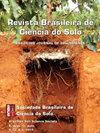降雨侵蚀力估算:使用巴西东南部数据的方法之间的比较和统计评估
IF 2
4区 农林科学
Q3 SOIL SCIENCE
引用次数: 6
摘要
降雨侵蚀力(R因子)是通用水土流失方程的六个因子之一,由降雨动能乘以其30分钟最大强度计算得到。然而,由于世界上许多地方缺乏详细和可靠的降雨数据,因此采用了基于日、月或年数据的其他方法来估计降雨侵蚀力。这些方法仍然需要评估,以确定它们的估计是否与计算降雨侵蚀力的标准方法一致。本研究的目的是在巴西没有降雨强度数据的情况下选择一种一致的替代方法。检测方法包括:改良富尼尔,MF;修正Fournier by Zhang, MF-Z;Men改良的Fournier, MF-M;降雨分解;RD;修正傅里叶系数TRMM卫星;和TRMM卫星的月降雨量。降雨量数据来自USP气象站,时间为2009 - 2015年。根据可加性主效应和乘法相互作用(AMMI)模型和Scott-Knott统计检验进行分析。考虑到1:1线,所有方法都有很好的调整,表现出与标准方法相似的行为。月度和年度期间的方法表现不同。事实证明,MF方法能够在上述所有情况下始终如一地取代标准方法。考虑到最干旱时期,任何方法都可以使用。对于年降雨侵蚀力估算,可采用RD、MF、TRMM-F和TRMM-M方法;强调基于trmm的方法对于没有现场雨量计的地点是最佳的。另外,Men修正的Fournier和Zhang修正的Fournier分别低估和高估了降雨侵蚀力。本文章由计算机程序翻译,如有差异,请以英文原文为准。
Rainfall erosivity estimation: Comparison and statistical assessment among methods using data from Southeastern Brazil
Rainfall erosivity (R factor) is one of the six factors of the Universal Soil Loss Equation, being calculated based on the product of rainfall kinetic energy multiplied by its 30-minute maximum intensity. However, the lack of detailed and reliable rainfall data in many parts of the world has driven the use of other methods to estimate rainfall erosivity based on daily, monthly or annual data. These methods still need to be assessed to determine if their estimates are consistent with the standard method for calculating rainfall erosivity. This study aimed to select a consistent method for such replacement in Brazilian conditions without access the rainfall intensity data. The tested methods included: modified Fournier, MF; modified Fournier by Zhang, MF-Z; modified Fournier by Men, MF-M; Rainfall Disaggregation, RD; TRMM Satellite with modified Fournier coefficient, TRMM-F; and TRMM Satellite with monthly rainfall, TRMM-M. The rainfall data were obtained from the USP Meteorological Station, referring to the period from 2009 to 2015. The analyses were performed according to the Additive Main effects and Multiplicative Interaction (AMMI) model and Scott-Knott statistical tests. Considering the 1:1 line, all methods had a good adjustment, presenting similar behavior in relation to the standard method. The methods behaved differently for monthly and annual periods. The MF method proved to be capable of consistently replacing the standard method in all aforementioned situations. Considering the driest period, any method can be used. For annual rainfall erosivity estimation, the RD, MF, TRMM-F and TRMM-M methods can be applied; highlighting that the TRMM-based methods are optimal for locations without on-site rain gauges. Additionally, it was computed that the modified Fournier by Men and the modified Fournier by Zhang underestimated and overestimated the rainfall erosivity, respectively.
求助全文
通过发布文献求助,成功后即可免费获取论文全文。
去求助
来源期刊

Revista Brasileira De Ciencia Do Solo
农林科学-土壤科学
CiteScore
3.00
自引率
11.80%
发文量
32
审稿时长
9-24 weeks
期刊介绍:
The Revista Brasileira de Ciência do Solo is a scientific journal published by the Brazilian Society for Soil Science (SBCS), founded in 1947, and is responsible for the propagation of original and inedited technical-scientific work of interest for Soil Science.
Contributions must not have been previously published or submit to other periodicals, with the only exception of articles presented in summarized form at professional meetings. Literature reviews are accepted when solicited by the Editorial Board.
 求助内容:
求助内容: 应助结果提醒方式:
应助结果提醒方式:


